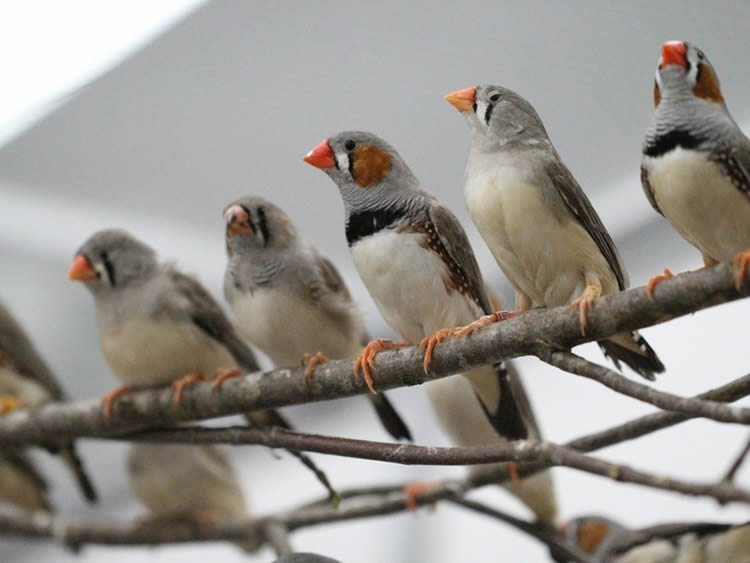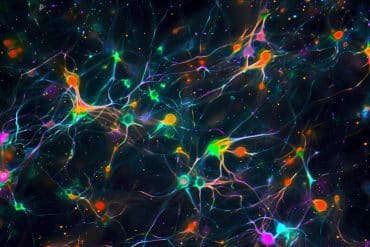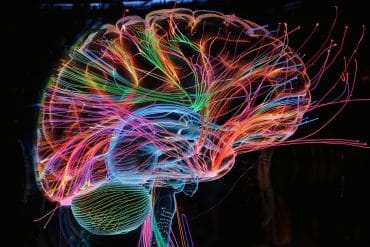Zebra finches use their specialised song system for simple communication.
In addition to their song, songbirds also have an extensive repertoire of calls. While the species-specific song must be learned as a young bird, most calls are, as in the case of all other birds, innate. Researchers at the Max Planck Institute in Seewiesen have now discovered that in zebra finches the song control system in the brain is also active during simple communication calls. This relationship between unlearned calls and an area of the brain responsible for learned vocalisations is important for understanding the evolution of song learning in songbirds.
Almost half of all bird species are songbirds. Only they have the ability to learn complicated vocal patterns which are described generally as song. Several studies prove that the songs of songbirds serve mainly to select a partner and defend a territory. In the temperate zones of the Northern hemisphere, usually only the male birds sing.
However, all birds, both male and female, have calls – including species such as the zebra finch, where the female never sings. Apart from a few exceptions, the calls do not have to be learned and are used for communication purposes. They are mostly associated with a specific purpose as in the case of alarm calls and contact calls, for example. The songbird’s song is of great interest for neurobiologists as it is controlled by a network of nuclei in the forebrain. Neuroscientists study this network to investigate general rules that determine how the brain controls behaviour.

Using specially designed methods to record song and brain activity, a team of researchers at the Max Planck Institute for Ornithology in Seewiesen has now found the neuronal basis of unlearned call communication. The researchers developed ultra-light microphone transmitters which they attached with rubber bands to the backs of zebra finch couples like rucksacks. They also attached a wireless recording system to the males to measure brain activity.
Thanks to this miniature telemetry technology, the animals could move freely in groups in large aviaries so that the scientists were able to continuously register the animals’ entire behavioural repertoire. In their experiment, the researchers concentrated on so-called “stack” calls. They discovered that these calls mainly promote cohesion between males and females within bonded pairs. “Constant contact with a partner is important, as the zebra finches live in large social groups,” says Lisa Trost, co-author of the study.
Surprisingly, not every call produces an answer in the partner, which initially presented the researchers with a problem during the analysis. They determined that a call from a partner only qualifies as an answer if it is made within two seconds. “We were thus able to create a matrix that clearly showed that almost without exception the two partners exchange calls with one another, which underlines the important social component of this ‘stack’ call,” says Andries Ter Maat, lead author of the study.
When the researchers analysed the activity in an area of the brain that is important for the production of song – an area known as nucleus RA – they found a clear correlation between its activity pattern and the occurrence of the “stack” call. “This connection between an innate call and the activity of a brain area important to learned vocalisations suggests that during the evolution of songbirds, the role of the song area in the brain changed from being a simple vocalisation system for innate calls to a specialised neural network for learned songs,” concludes Manfred Gahr, coordinator of the study.
In addition to McAllister Byun, study authors include Elaine R. Hitchcock and Michelle T. Swartz of Montclair State University. The research was supported by the National Institutes of Health (NIH R03DC 012883).
Contact: Dr. Andries Ter Maat – Max Planck Institute
Source: Max Planck Institute press release
Image Source: The image is credited to S. Seltmann and is adapted from the Max Planck Institute press release
Original Research: Full open access research for “Zebra finch mates use their forebrain song system in unlearned call communication” by Andries Ter Maat, Lisa Trost, Hannes Sagunsky, Susanne Seltmann, and Manfred Gahr in PLOS ONE. Published online October 14 2014 doi:10.1371/journal.pone.0109334
Zebra Finch Mates Use Their Forebrain Song System in Unlearned Call Communication
Unlearned calls are produced by all birds whereas learned songs are only found in three avian taxa, most notably in songbirds. The neural basis for song learning and production is formed by interconnected song nuclei: the song control system. In addition to song, zebra finches produce large numbers of soft, unlearned calls, among which “stack” calls are uttered frequently. To determine unequivocally the calls produced by each member of a group, we mounted miniature wireless microphones on each zebra finch. We find that group living paired males and females communicate using bilateral stack calling. To investigate the role of the song control system in call-based male female communication, we recorded the electrical activity in a premotor nucleus of the song control system in freely behaving male birds. The unique combination of acoustic monitoring together with wireless brain recording of individual zebra finches in groups shows that the neuronal activity of the song system correlates with the production of unlearned stack calls. The results suggest that the song system evolved from a brain circuit controlling simple unlearned calls to a system capable of producing acoustically rich, learned vocalizations.
“Zebra finch mates use their forebrain song system in unlearned call communication” by Andries Ter Maat, Lisa Trost, Hannes Sagunsky, Susanne Seltmann, and Manfred Gahr in PLOS ONE doi:10.1371/journal.pone.0109334.






